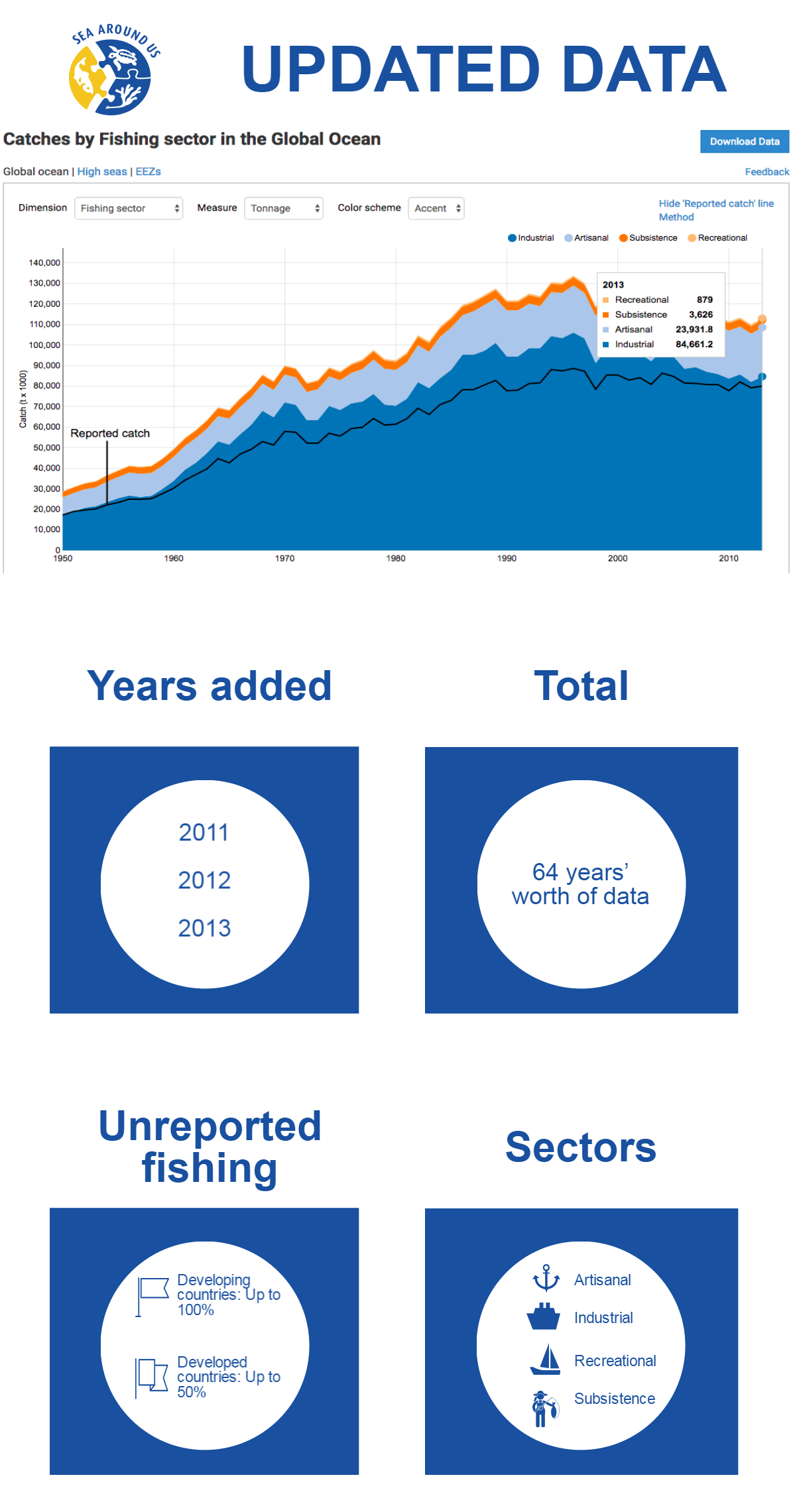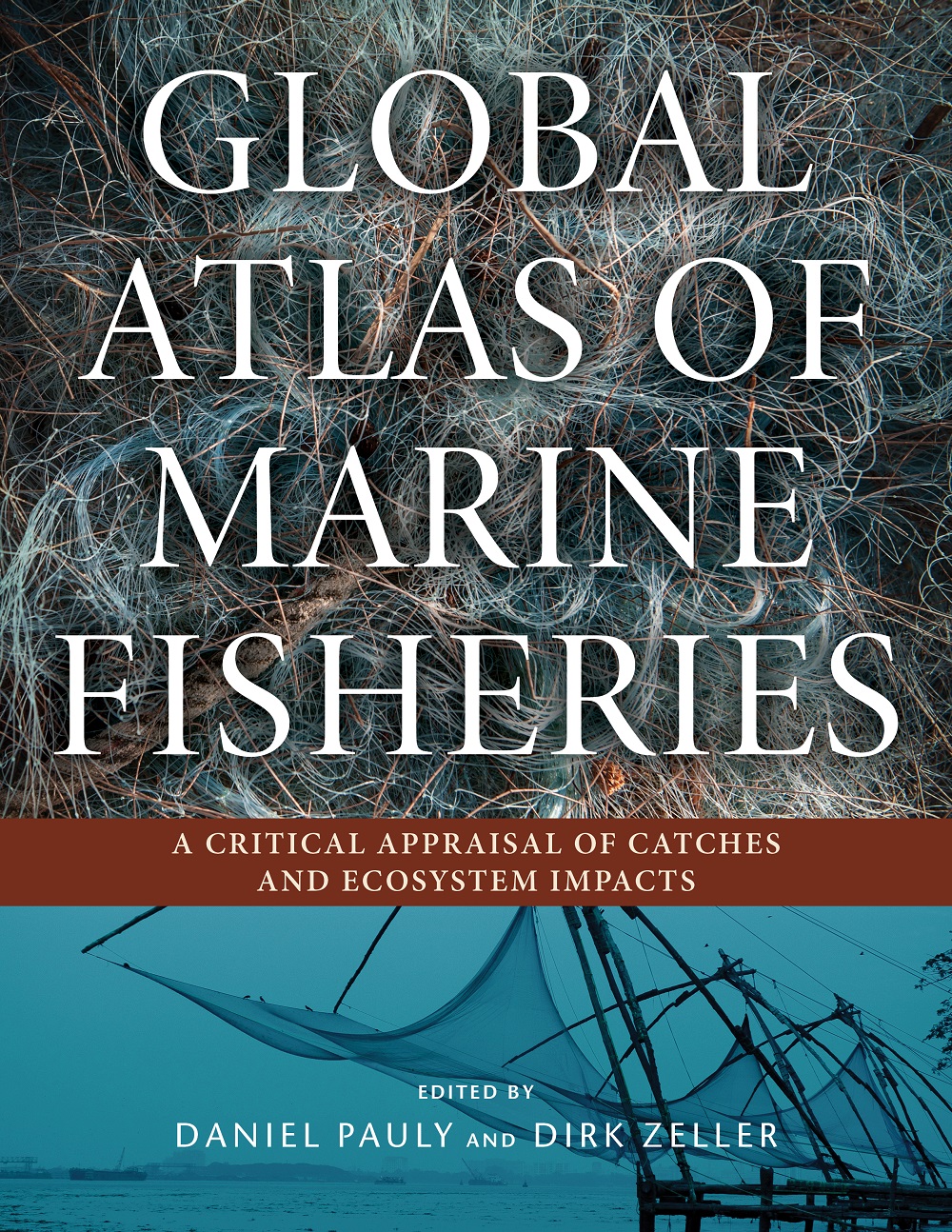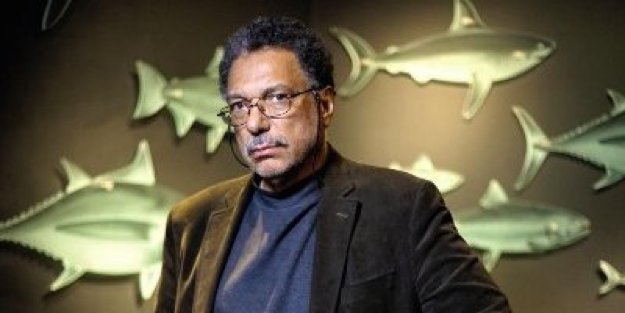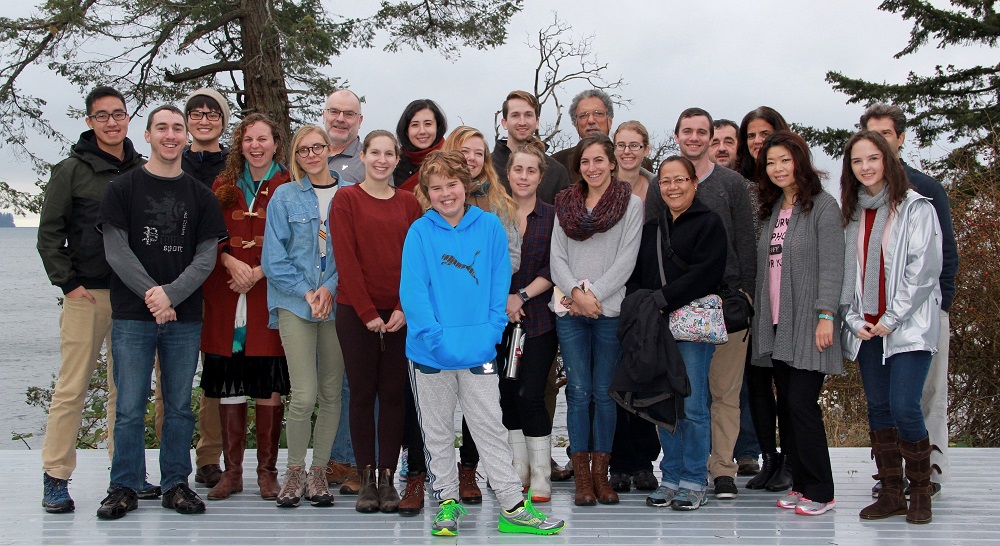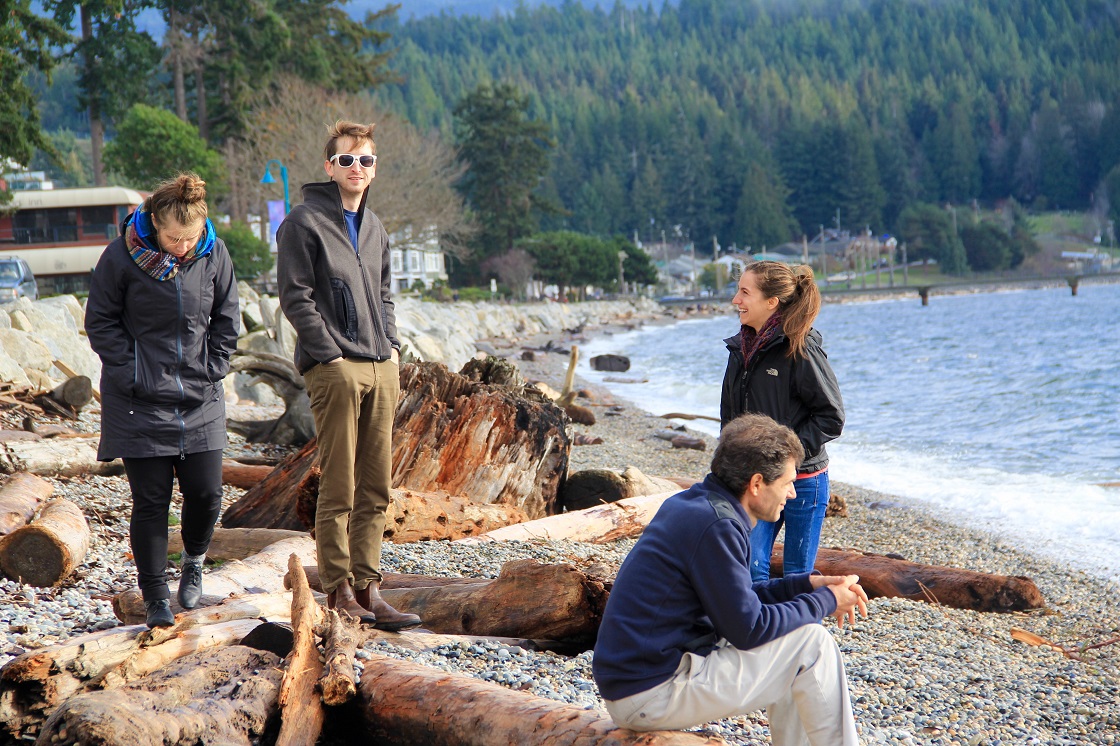The Sea Around Us team is pleased to announce that the marine fisheries catch data and derived indicators on its website have been updated from 2010 to include information from 2011, 2012, and 2013.
This means that time series with 64 years’ worth of data (1950-2013) are available for free on www.seaaroundus.org, as is our catch mapping tool.
The documentation of data, methods, and assumptions made for this update will be presented for each country and territory in early 2017, after a further update to 2014 has been completed.


